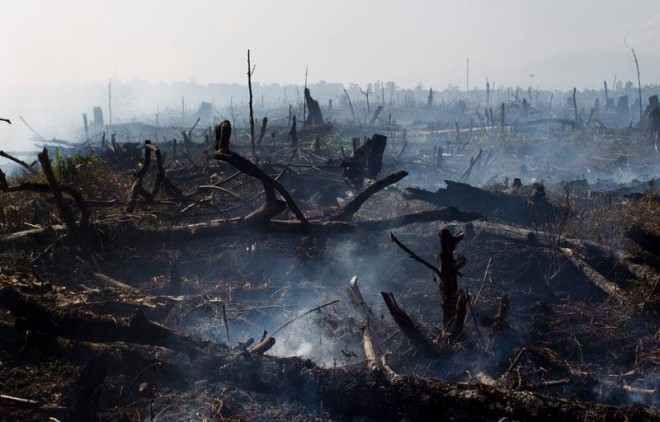棕榈油企业焚雨林 印尼法院判赔千万美元
Posted on Monday, January 20th, 2014 and under 大马时事.Warning: Undefined variable $before in /home3/myrunners/public_html/itudia.com/share/wp-content/themes/sim/single.php on line 19
Warning: Undefined variable $sep in /home3/myrunners/public_html/itudia.com/share/wp-content/themes/sim/single.php on line 19
Warning: Undefined variable $after in /home3/myrunners/public_html/itudia.com/share/wp-content/themes/sim/single.php on line 19
Tags: 棕油烧芭
~ 许多马来西亚棕油企业也会被罚, 如果我国执行相同的法律! ~
12/01/2014 – 印尼法院日前对于棕榈油企业PT Kallista Alam违法焚烧大片赤巴 (Tripa) 泥炭地森林做出判决. 由印尼环境部起诉的罪名成立, PT Kallista Alam面临940万美元的罚款, 法院并下令没收该公司5769公顷的所有土地, 且须支付2080万美元的费用以复育遭破坏的雨林, 每延迟缴纳罚款与复育费一天, 就必须支付423美元.

棕榈油企业焚雨林 印尼法院判赔千万美元
赤巴泥炭地森林位于印尼苏门答腊列尤择 (Leuser) 生态区内, 是红毛猩猩与苏门答腊虎的栖地, 也是世上唯一可同时发现犀牛, 大象, 老虎和红毛猩猩的地方.
在1990年代尚有2000至3000只红毛猩猩在此栖
苏门答腊红毛猩猩保育计划负责人Ian Singleton说 : “赤巴地区是苏门达腊境内仅存三个保有红毛猩猩的泥炭地
Palm Oil Company Fined Millions for Burning Sumatran Forest
~ Many Malaysia oil palm plantation would have to pay the same if the same law applies! ~
12/01/2014 – An Indonesian court has found the palm oil company PT Kallista Alam guilty of illegally burning large swathes of the Tripa peat forest, which lies within Sumatra’s Leuser Ecosystem, the only place on Earth where tigers, elephants, rhinos, and orangutans can be found living together in the wild.
The court ordered the company to pay 114.3 billion rupiah (US$9.4 million) in compensation and 251.7 billion rupiah (US$20.8 million) to restore the affected areas of forest.
The case was brought against PT Kallista Alam by the Indonesian Ministry of Environment.
There were some 2,000 to 3,000 orangutans in the area in the 1990s, but only a few hundred are left today.
Orangutans are not the only animals in jeopardy as the Tripa swamp is slashed and burned; the area has also been home to Sumatran tigers, Malayan sun bears and other endangered and protected wildlife.
Singleton said : “Tripa is one of only three remaining peat swamp forests left containing orangutans in Sumatra, and it’s impossible to overstate the importance of protecting every last hectare of each of them.”
Read more at : http://ens-newswire.com/

